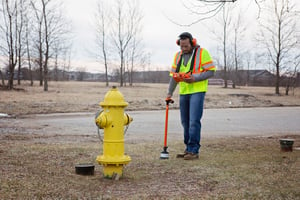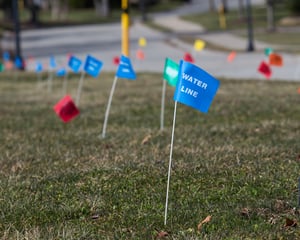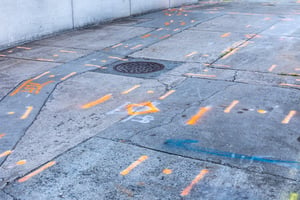
Utility locating is more complicated in urban, highly-populated areas where underground utilities are more dense. The population of metropolitan areas in the U.S. increased 9% between 2010 and 2020. However, less than half of all U.S. counties gained population during this period--which means, in general terms, more people are living in denser areas.
These trends suggest that demand for utility locating will only grow, and that locating itself will become a more and more difficult but essential task as time goes on. To meet the country’s changing needs, wastewater, construction and utilities professionals need to invest in understanding and expanding utility locating services.
What is Utility Locating?
Utility locating is the process of finding and marking utility lines that are buried underground. Utility lines include sewer lines, gas lines, water pipes, and telephone and data cables, among others. Marking utility lines involves using identifiers such as chalk, spray paint, tape or flags to indicate where utilities are buried.

The goal of locating services is to ensure safe excavation and public safety by identifying and protecting buried assets.
How Does Utility Locating Work?
In the United States, utility locating follows a specific process. According to the national 811 Utility Notification Center, the person planning on digging (on private or public property) needs to call their state’s one call center at least two business days prior to digging. The one call center will then send the excavator’s information to its operators, who have two business days to locate and mark the affected area’s underground utilities. These markings enable the excavator to complete their project safely.
While public utility locating is a free service in the U.S., one call centers do not mark out privately owned utilities. Private utility locating can be costly, but this service is required for all non-public buried assets. Most construction sites include at least one private utility.
Why Does Utility Locating Matter?
Utility locating services protect the public from disasters such as gas line explosions or electrocution, which can occur if excavators strike a buried utility. Accidentally damaging utility lines is costly and can also cause problems like service outages or building evacuations. Locating minimizes construction delays and significantly reduces the possibility of bodily harm occurring on worksites.
In 2015, the San José-Santa Clara Regional Wastewater Facility developed a system to consistently identify and document buried utilities to a high degree of accuracy. The locators documented their utilities using drawings and a geographic information system (GIS), ensuring that these utilities will be easy to keep track of in the future.

After this approach was put in place, the facility saved roughly $175,000 during a fire main replacement project. The locators were able to reduce costs and avoid construction delays with their new approach.
To put it lightly, damaging utilities is a hassle. Overall, the best way to prevent damage is to ensure that utility locations are accurately recorded and confirmed by multiple locating methods.
Underground utility markings are integral to the locating process. Our free utility markings poster is an easy reference with common locating colors, symbols and codes. Request a copy for your truck today:

